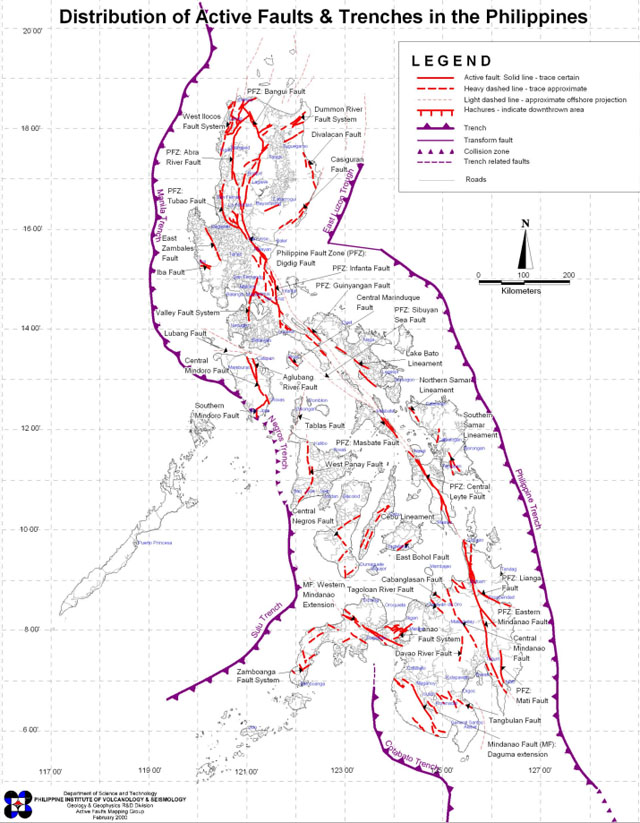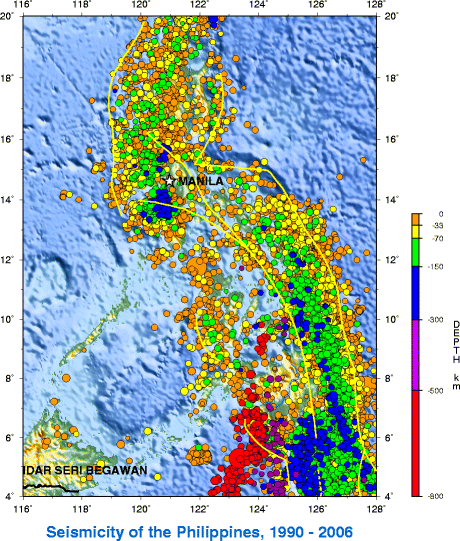Filtered By: Scitech
SciTech
Phivolcs: Maps are incomplete due to lack of geologists
Philippine Institute for Volcanology and Seismology (Phivolcs) Deputy Director Bart Bautista said that the government has been aware of the existence of fault lines in Negros Island —which was hit by a magnitude 6.9 earthquake on February 6 that killed over 50 people— but the information was just preliminary and “incomplete.”
Bautista lamented that the tremor was in one of many areas that have yet to be mapped completely due to a lack of trained experts.
“It was not a newly discovered fault line. We have known that there are fault lines there already, but we just didn't have complete information on its exact location and characteristics,” he said.
“We have been asked why we could not accelerate this (mapping project). But this is not easy. Not all geologists can do it. This is highly specialized and we have to send them abroad first to study,” Bautista explained.
According to the Professional Regulation Commission, the country has only 704 currently practicing licensed geologists. This year, initial registrants are 09 while those who renewed their licenses are 595.
Since 1965, the PRC granted licenses to 1,777 to practice geology. There were only 456 examinees who took the geology licensure examinations from 2002 to 2011.
In contrast for example, the country had 1,770 new civil engineers who passed the civil engineering licensure exam given last November.
Palawan is earthquake-free The only thing Phivolcs could say for certain about earthquakes in the country is that only Palawan is largely safe from tremors.
Bautista explained that Palawan is the only earthquake-safe area in the Philippines because the island sits on a stable continental shelf and is not bounded by fault lines.
This is evident in Phivolcs' overview map of the country's active faults and trenches. It clearly shows that Palawan is set apart from the rest of the Philippines, which is criss-crossed by a vast network of fault lines:

The effect of this fault network on Palawan and the rest of the country is suggested by the map below, developed by the US Geological Survey, of earthquake activity in the Philippines from 1990 to 2006:

In the USGS map above, Palawan is shown to have experienced just one shallow earthquake in 16 years, in contrast to the hundreds of earthquakes of various intensities recorded across the country within the same time period.
Mapping will take years
Phivolcs, Bautista said, has been mapping the major fault lines of the Philippines since the 1990s. But the project is not just about locating the potential sources of earthquakes.
"(The Negros fault lines are set) to be mapped, but right now, we are prioritizing the major fault lines,” he said.
The ongoing project determines important characteristics of fault lines such as depths and segments. It also records frequency of earthquake occurrence. All these data help geologists predict the potential strength of tremors.
Moreover, Bautista said it could take years before Phivolcs' limited staff can finish its map of the country's fault lines. He said that the government agency does not have enough geologists and experts to quickly and comprehensively chart them all.
Uncharted dangers
Bautista warned that the Negros catastrophe should remind Filipinos how vulnerable the entire country is to earthquakes. The entire country should prepare for earthquakes, he warned.
“Long-term preparedness is important. People should follow land use planning and building codes,” he said.
The known network of fault lines in Negros is classified as moderately strong, with the potential to unleash a magnitude 7.5 or stronger earthquake.
Over 50 people were killed in the tremor in Negros Oriental, which was considered to be “moderately strong.” The earthquake, said to be the strongest in the Visayas, rocked the region at 11:49 a.m.
Its epicenter was located 5 kilometers northwest of Tayasan town in Negros Oriental. The quake was tectonic in origin and had a depth of 10 km. The US Geological Survey placed the magnitude at 6.7. — with TJ Dimacali/YA/ELR, GMA News
More Videos
Most Popular




